Google’s New Nexus 7 (II) vs Nexus 7
With the eminent release of Google’s Nexus 7 successor, the second generation Nexus 7 2013 or Nexus 7 (II) to some in the UK, we ask the questions; how is it different from the first one, does it warrant an upgrade if we already have the first Nexus and if not, should we jump for the first generation Nexus 7 when it goes into bargain basement price mode.
As with all things technology, particularly gadgets, successors will always trump it’s previous generation. Let’s take a look at categories that matters.
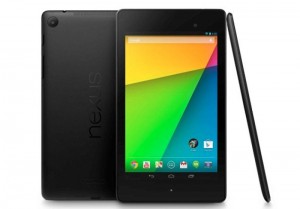
Screen
The biggest improvement, in fact the biggest among all tablets in this category is the Nexus 7 II’s screen definition. At 1920 x 1200, the device squeezes an industry leading 323 pixels per inch, nearly 50% more pixels.
This is leaps and bounds even for Google’s Nexus 10. The bigger siblings have a resolution of 300 ppi which falls short of Nexus 7 2nd generation’s pixel density. We can safely say now, Nexus 10 had the world’s highest resolution tablet display.
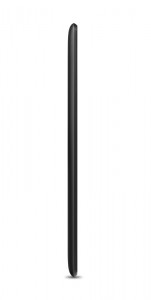
Sticking with low resolution displays just does not cut it anymore – we are looking at you, iPad mini (1024 x 768). This will definitely present a challenge to the upcoming new iPad mini.
Nexus 7: 7″ screen 1280 x 800 (216 ppi)
Nexus 7 2nd Generation: 1920 x 1200 (323 ppi) [FULL HD & 50% MORE PPI]
Dimensions and Weight
The second generation Nexus 7 is thinner and lighter at 1.8mm thinner and weighing some 41 grams less. While the height is not very different, the width lost a whole 6mm. Losing the bezel length wise gives the screen a wider feel. This also means it’s easier to hold the device in the palm of your hand.
Nexus 7: 198.5 x 120 x 10.5mm and weighed 340g
Nexus 7 2nd Generation: 200 x 114 x 8.7mm and tops the scales at 299g. [THINER AND LIGHTER]
 Processor, GPU, Memory, Storage
Processor, GPU, Memory, Storage
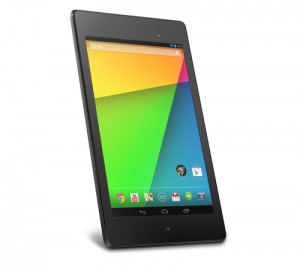
The second generation Nexus is based on the same processor used by LG and Google in the Nexus 4 smartphone. The proven processor from Qualcomm, the Snapdragon S4Pro is definitely going to make its mark on the Nexus 7 coupled with the Adreno 320 GPU.
Nexus 7 2nd Generation has double the memory from its predecessor at 2GB RAM. However, the same cannot be said for internal storage. Google has decided to stay with 16GB and 32GB storage and again, stayed away from including an SD card slot.
Nexus 7: Nvidia Tegra 3 quad-core process, 1 GB RAM, 16/32GB internal storage
Nexus 7 2nd Generation: Qualcomm Snapdragon S4Pro Quad-core 1.5 GHz Krait processor, 2 GB RAM, 16/32GB internal storage [FASTER CPU, MORE MEMORY BUT SAME STORAGE OPTIONS]
 Camera
Camera
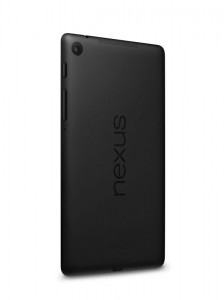
A much needed and welcome addition to the second generation Nexus 7 is a rear facing camera. This was absent from the earlier Nexus 7 and much to its detriment as customers decided to stay away from it purely on that reason.
While I won’t recommend using a 10″ tablet to take photos, a 7″ tablet is just about the right size. The plethora of apps available to capture, manipulate and share images is just too enticing to not have a tablet without a camera. (Check out our Top 5 Free Photo Editor Apps review)
The second generation Nexus 7 sports a 5MP rear-facing camera, with features such as geo tagging, face detection and touch focus. And don’t forget the 1.2MP front-facing camera for video chat.
The 5MP camera is also capable of capturing high definition 1080p video at 30 fps.
Nexus 7: 1.2MP front-facing camera only
Nexus 7 2nd Generation: 1.2MP front-facing camera and 5MP rear-facing camera [FINALLY, A REAR FACING CAMERA]
 Software
Software
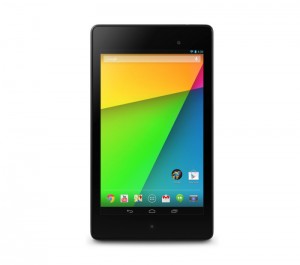
While the Nexus 7 was first introduced with Android OS 4.2 Jelly Bean, it can be upgraded to Android OS 4.3 Jelly Bean. Nexus 7 2nd generation however will be released with Android OS 4.3 and likely to be around for another for a few rounds of OS updates.
Nexus 7: Android OS 4.2 Jelly Bean
Nexus 7 2nd Generation: Android OS 4.3 Jelly Bean
Connectivity and Sensors
Both Nexus 7 and Nexus 7 2nd Generation comes with Wi-Fi 802.11 a/b/g/n, Dual-band, Bluetooth 4.0, NFC and 4G Connectivity options. Other sensors includes accelerometer, gyroscope, proximity, magnetometer, GPS and microphone.
 Battery Life
Battery Life
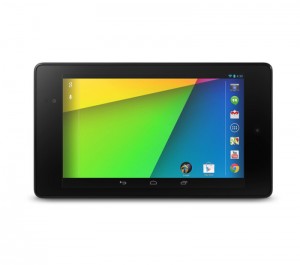
There is nothing to shout about with the first Nexus 7’s battery life. Some have even reported battery drain issues and less than satisfactory battery performance. However, all is not lost, Google and countless other bloggers and tech sites are coming up with tips on how to extend and maintain battery life.
On paper, the 2nd generation Nexus 7 has a smaller battery. It doesn’t make sense, how a device with a multi-core processor, high resolution display and a smaller battery charge capacity can hold its 10 hours battery life claim.
Early reviews are suggesting 9-10 hours battery life which is good news. This is thanks to the choice of processor; the Snapdragon S4Pro does more with less battery power and the new Android OS 4.3 provides for better efficient power management.
Also in the power department, the second generation Nexus supports a wireless charging option with the wireless charging dock (optional add-on). The same wireless charging dock sold along with Nexus 4 smartphone can be used with the new Nexus as it uses the same technology known as Qi wireless charging.
Nexus 7: Non-removable Li-Ion 4325 mAh battery [9 hours]
Nexus 7 2nd Generation: Non-removable Li-Ion 3950 mAh battery [SMALLER BUT BETTER BATTERY LIFE 9/10 HOURS]
Final Thoughts
Now that you have seen the difference between Nexus 7 and the Nexus 7 2nd Generation, this is where we ask the really important questions:
If I already have the first Nexus 7, should I upgrade?
or, I’m in the market for a new 7″ tablet, which Nexus 7 should I get?
Here is what we think. Today’s gadget is yesterday’s news.
If you are a super user on your Nexus 7 and notice the lag, the Nexus 7 (II) is definitely worth considering, given it’s technical specifications, it is a much better performer.
Technology moves so quickly that if you have the spare cash and you are in the market for a new 7″ tablet, go for the Nexus 7 2nd Generation. It will give you that much longevity in useful life span.
But if you don’t have the spare cash, and desperately want a 7″ tablet, the 1st Generation Nexus 7 which is only a little more than a year old since it’s launch in mid-July 2012 is still a capable tablet. Given that Google will release the Android OS 4.3 that will very likely work on the old Nexus 7, this is still a worthy device.
We leave you with the official presentation of The New Nexus 7″ running Android 4.3


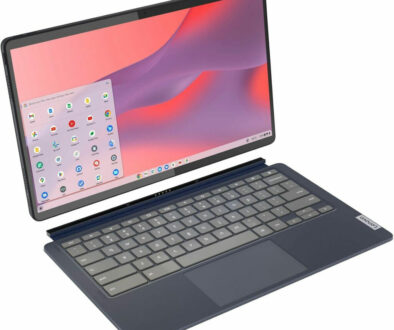
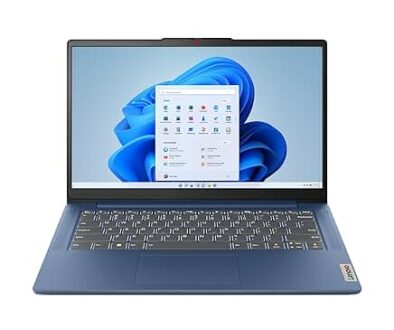







Google's New Nexus 7 (II) vs Amazon's Kindle Fire HDs (7" and 8.9") Review | Colour My Learning
August 22, 2013 @ 10:35 pm
[…] our last article, we looked at Google’s New Nexus 7 (II) vs Nexus 7. In this article, we compare the New Nexus 7 (2013) to other Tech Giant’s offerings, the […]
The New Samsung Galaxy Note 3 vs Galaxy Note 2 | Colour My Learning
September 6, 2013 @ 4:08 pm
[…] While the Galaxy Note 3 is smaller, it is not much smaller by any count, but any shift towards ‘small’ is good for any gadget, in my books. The Galaxy Note 3 shaved 1.2 mm (height), 1.3mm (width) and 1.1mm (depth). At 8.3mm this is thinner than the recently released Nexus 7 2013 which is 8.7mm, granted it’s a 7″ tablet (find the comparative review here). […]
December 4, 2013 @ 5:55 am
A note concerning Connectivity on the Gen 1; it does not have Bluetooth 4.0.
Nexus 5 the Epitome of An Android Smartphone | Colour My Learning
December 9, 2013 @ 3:35 pm
[…] Google spared no expense and has delivered yet another wonderful product. We have seen this with Nexus 7 (both 2012 and 2013 edition). The software update (4.4.1) means that the camera output is not going to stand in the way of […]
Kindle Fire HD vs Kindle Fire HDX 7″ Tablets | Colour My Learning
December 14, 2013 @ 7:13 pm
[…] definitely worth every penny. This also changes the game when pitching the Kindle Fire HDX against Google’s Nexus 7 2013 which retails at £199 and it’s predecessor Nexus 7 2012 . However, the same offer is not extended to the WiFi and 3G/4G […]
Top 5 Windows 8.1 Tablets | Colour My Learning
December 19, 2013 @ 9:45 pm
[…] new Kindle Fire HDX 7-inch and flagship Kindle HDX 8.9-inch tablets, the overnight success of Google’s Nexus 7 2013 and Nexus 5 smartphone, what can we expect from tablets based on Microsoft’s OS. Since the […]